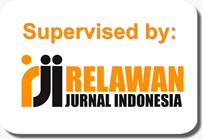ANALYSIS OF SUPPLY CHAIN FINANCING IN IMPROVING COMPANY FINANCIAL FLOW (STUDY OF DEBTORS OF BANK BRI KANCA SURABAYA RAJAWALI)
Abstract
Every company that wants to achieve the goal of getting optimal profits and reducing expenses as much as possible, such as spending on product marketing costs in the form of product design, forecasting needs, material procurement, production, inventory control, storage, and distribution to distributors, it is necessary to control costs through a production and information flow management model, especially in marketing a product by modifying logistics and financial management called supply chain financing. Currently, PT Bank Rakyat Indonesia Tbk is growing rapidly with various financial services offered to customers such as supply chain financing. Customers who currently have utilized the supply chain financing service program at one of BRI Branch Offices, namely BRI Surabaya Rajawali, including PT Envira (EV), PT Global Karya Utama (GK), PT Karya Usaha Baru (KU), PT Aryana Cakasana (AC), and PT Srikaya Putra Mas (SP). The purpose of this study is to analyze the financial flow condition of PT Envira (EV), PT Global Karya Utama (GK), PT Karya Usaha Baru (KU), PT Aryana Cakasana (AC), and PT Srikaya Putra Mas (SP) before and after implementing supply chain financing, and to analyze its effectiveness in improving financial flow capability. After an in-depth analysis, it is concluded that the Supply Chain Financing Account Receivable (SCF A/R) financing has been effective in EV, GK, AC, and SP companies but less effective in KU company due to internal company factors where PT Sinarmas Group transferred its project to another subsidiary which is also engaged in security services (Security) so that the Net Income of KU company decreased even though it had received Supply Chain Financing Account Receivable (SCF A/R).
Full Text:
PDFReferences
Abdullah, T., & Wahjusaputri, S. (2018). Bank dan Lembaga Keuangan Edisi 2. Jakarta: Mitra Wacana Media.
Andrian, A., Qadri, R. A., Zai, I., Jessyka, J., Astuti, E., & Michelle, M. (2023). Penerapan Sistem Manajemen Sumber Daya Perusahaan (ERP) Dalam Kinerja Manajemen Rantai Pasok (SCM) PT. Sas Majesty Wellness. Journal of Business, Finance, and Economics (JBFE), 4(1), 238–247. https://doi.org/10.52644/joeb.v12i3.244
Bank Rakyat Indonesia. (2022). Overview Bisnis-Regional Transaction Banking.
Brigham, E. F., & Daves, P. R. (2019). Intermediate financial management. Cengage Learning.
Couix, Q. (2020). Georgescu-Roegen ’ s Flow-Fund Theory of Production in Retrospect. Elsevier, 2019, 1–27.
Fakhroni, Z., Irwansyah, & Pattipawaej, N. C. (2022). Life cycle and external fund : perspective of trade-off theory and pecking order theory. INOVASI: Jurnal Ekonomi, Keuangan Dan Manajemen, 18(Special Issue), 96–103. https://doi.org/10.29264/jinv.v18i0.11243
Gea, J. S., Butarbutar, M., & Young, I. (2022). How cash flow information determined and reported to external users in pandemic of COVID-19 era. International Journal of Health Sciences, 6(S3), 431–451. https://doi.org/10.53730/ijhs.v6nS3.5172
Karas, M., & Režňáková, M. (2020). Cash flows indicators in the prediction of financial distress. Engineering Economics, 31(5), 525–535. https://doi.org/10.5755/j01.ee.31.5.25202
Lee, K. L., Wong, S. Y., Alzoubi, H. M., Al Kurdi, B., Alshurideh, M. T., & El Khatib, M. (2023). Adopting smart supply chain and smart technologies to improve operational performance in manufacturing industry. International Journal of Engineering Business Management, 15, 18479790231200616. https://doi.org/10.1177/18479790231200614
Maharani, D., Haris, H., Aprillia, N., Marthin, R., Flowerensia, D., Cuandra, F., & Zai, I. (2022). Pengaruh Supply Chain Management Terhadap Operasional Perusahaan Dan Kendala Procurement Sistem Erp Pada Pt Unilever Indonesia Tbk. TRANSEKONOMIKA: Akuntansi, Bisnis Dan Keuangan, 2(3), 113–126. https://doi.org/10.55047/transekonomika.v2i3.133
Mingkid, G. J., Liando, D., & Lengkong, J. (2018). Efektivitas Penggunaan Dana Desa Dalam Peningkatan Pembangunan (Suatu Studi Di Desa Watutumou Dua Kecamatan Kalawat Kabupaten Minahasa Utara). Eksekutif, 2(2), 1–34.
Mofokeng, T. M., & Chinomona, R. (2019). Supply chain partnership, supply chain collaboration and supply chain integration as the antecedents of supply chain performance. South African Journal of Business Management, 50(1), 1–10.
Nurjanah, I., & Purnama, D. (2021). Pertumbuhan Perusahaan, Ukuran Perusahaan, Struktur Aset, Profitabilitas Dan Pengaruhnya Terhadap Kebijakan Hutang. Jurnal Revenue: Jurnal Ilmiah Akuntansi, 1(2), 260–269. https://doi.org/10.46306/rev.v1i2.35
Saeed, M. A., & Lv, X. (2021). Integration of Finance and Supply Chain: Emerging Frontier in Growing Economies. Available at SSRN 3933459. https://doi.org/10.2139/ssrn.3933459
Saleheen, F., & Habib, M. M. (2023). Embedding attributes towards the supply chain performance measurement. Cleaner Logistics and Supply Chain, 6(November 2021), 1–12. https://doi.org/10.1016/j.clscn.2022.100090
Sunardi, N. (2022). Penerapan Konsep Green Supply Chain Financing Solusi Pebiayaan untuk Meningkatkan Financial Flow PT Gunung Slamat, Kec. Slawi, Tegal, Jawa Tengah. Jurnal Abdi Masyarakat, 3(2), 85–96.
Wulandari, U., & Simon, H. J. (2019). Pengaruh Efektivitas Kerja Pegawai Terhadap Kualitas Pelayanan Publik Di Kelurahan Sidorame Barat I Kecamatan Medan Perjuangan. Jurnal Publik Reform UNDHAR MEDAN, 5, 1–8.
Yusnita, R., Tanjung, S. W., & Aisyah, S. (2022). Analysis Of The Strategy For Developing Msmes Of Banana Chips Food Supply Chain. Journal of Management, Accounting, General Finance and International Economic Issues (MARGINAL), 1(4), 17–22. https://doi.org/10.55047/marginal.v1i4.247
Zakaria, B. (2021). Analisis Laporan Arus Kas Sebagai Alat Ukur Efektivitas Kinerja Keuangan Perusahaan Daerah Airminum (Pdam) Kota Ternate. JUPEK: Jurnal Pendidikan Dan Ekonomi, 3(1), 1–16.
Zaman, S. I., Khan, S. A., & Kusi-Sarpong, S. (2023). Investigating the relationship between supply chain finance and supply chain collaborative factors. Benchmarking: An International Journal. https://doi.org/10.1108/BIJ-05-2022-0295
DOI: https://doi.org/10.31846/jae.v11i3.802
Refbacks
- There are currently no refbacks.

This work is licensed under a Creative Commons Attribution-NonCommercial-NoDerivatives 4.0 International License.
e-Jurnal Apresiasi Ekonnomi Indexed by:












